Today I share pictures and thoughts about Little Bittern Ixobrychus minutus, the smallest of the breeding herons of Europe, a shy, secretive bird, a species seen on a recent trip to Skiathos, Greece. This is a much sought after bird by British birders, one that rarely occurs here but one that causes a stir when it does. I have seen Little Bitterns in the Mediterranean and in the UK too, but have never watched them as closely and for such long periods as the ones in Skiathos. Click the pics for large size pictures.
Wherever it occurs the Little Bittern is uncommon to locally fairly common but secretive and easily overlooked. This is a tough bird to see because of its tiny size,about that of a pigeon, and its plumage and camouflage skills. Little Bitterns like fresh marshes and wetlands with reed beds, where they clamber high in reeds as well as feeding low along edges. Most likely to be seen in flight, early or late in the day, low over reed beds. Very small for a heron, and rich buffy overall with black cap. A large pale panel on upper wing visible in flight; male has dark back, female back streaked.
Little Bittern - Bright green = summer. Dark Green = winter.
I thought I got lucky in May 2022 when for a day or two I had close views of a female Little Bittern. On some days it would slide through the reeds and then seemingly disappear; but it was there, silent, immobile and made invisible by its camouflaged colours of reed stems, greenery and sunlight, waiting for me the intruder to leave.
Little Bittern
Little Bittern
And then in early May 2023 I had the extreme good fortune of finding an altogether more accommodating male Little Bittern in the exact same spot. Here I was able to pick & choose to watch over several days of our fourteen day trip to the island. Luckily the bittern was just yards from a favourite beach where long suffering wife Sue was able to indulge my obsession while enjoying the Greek sunshine.
Little Bittern
Little Bittern
Little Bittern
The bitterns were in perhaps the most unlikely looking spot, a three foot wide reed lined ditch fed by water run off from the nearby hills mixed with saline water from the Aegean Sea just metres away. The giant reeds of Skiathos are more like a bamboo, very tall, dense and extremely tough, quite unlike the phragmites reed of the UK.
The ditch contained a fair amount of detritus that is found on so many beaches of today’s world - lumps of polystyrene, drink cans, plastics and paper cups. All in all, not a salubrious spot to bird! However the ditch holds a population of Greek stream frog Rana graeca, an attraction that explains the continued presence of a predator like Little Bittern.
Greek stream frog Rana graeca
Greek stream frog Rana graeca
The bittern faced another hazard in the form of the local herd of 50/70 goats which roam the hills and fields of the north of Skiathos where the mix of landscape provides variety to their all inclusive diet. The goat’s regular route in 2023 included a five minute crash through the bittern’s favourite patch of mud and reed where they grabbed a munch of bamboo before moving along the buffet trail.
Goats of Skiathos
Goat Dog and Goatherd
All the while, the bittern watched and then came back to feed once the animals had moved on.
Little Bittern
Little Bittern
Little Bittern
Little Bittern
The list of “Birds of Island of Skiathos” (sic), The Systematic Classification of Skiathos Birds”, Presidential Decree 86/1969 Greek Legislation” does not include Little Bittern. The list is rather short, containing a modest list of species with a number of both likely and definite omissions, species I have seen on the island over a number of years e.g. Great Egret, Red-throated Pipit, Richard’s Pipit, Lesser Grey Shrike, Wryneck, Whinchat.
The lack of a complete list is not wholly surprising as Skiathos has no resident birdwatchers and very few visiting birders to what is essentially a tourist destination of sunny beaches with limited birding opportunities. And dare I say, the birding concept has yet to catch on here. The average Greek would never be seen out birdwatching with a pair of binoculars around their neck, least of all, a Greek man!
There is no doubt that Little Bitterns are scattered across Skiathos at least in the springtime. Whether they breed on the island is anyone's guess. There is a large population of Little Bitterns at Lake Mikra in Macedonia, Northern Greece and it could be that early May sightings in Skiathos are migrant birds heading north.
In Skiathos there’s lots of reedy bamboo and a good population of frogs to be had from reed lined drainage ditches that run from the hills down to the coast. I got lucky by not having to sit around for hours looking in likely spots as tourists in shorts and T shirts hung around nearby bars, beaches and sunbeds while giving me curious looks. Each to his own.
Will I be going back to Skiathos and being the only birder on the island? You bet.
Fifteen weeks to go and counting. I’m sure I can add to that list again when those September birds come along.








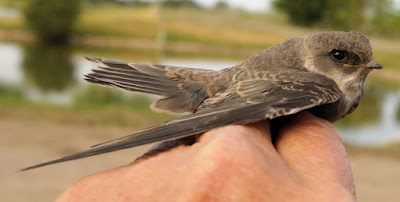




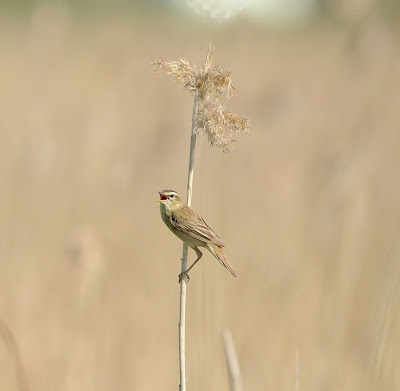















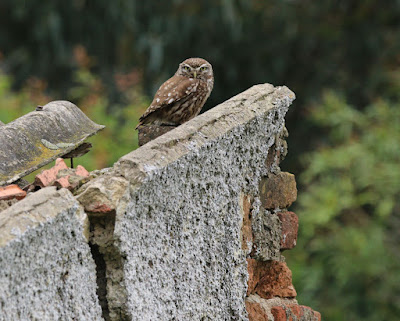













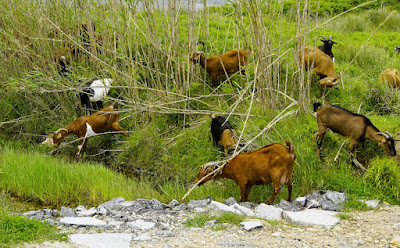

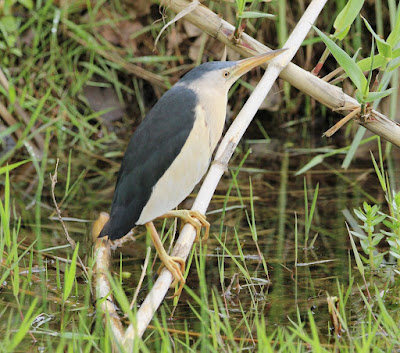














.JPG)







.jpg)











